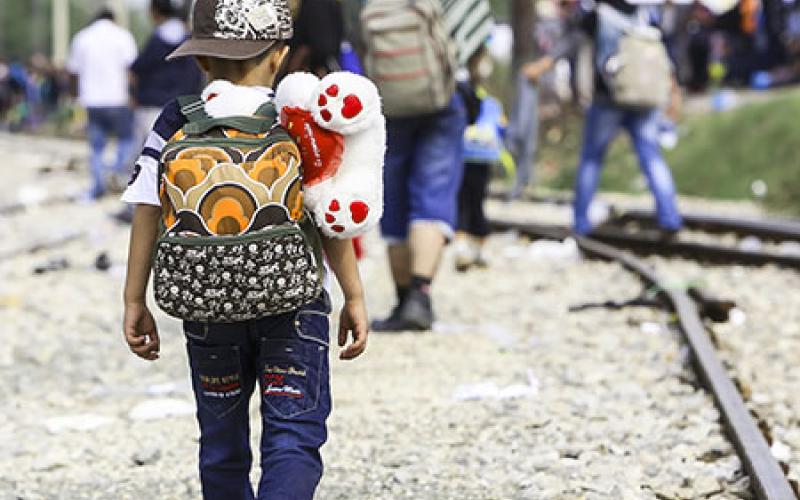Shifting climates, shifting people

Shifting climates, shifting people
Will climate change force human populations to migrate so as to flee natural disasters and resource scarcity? If so, will we see more conflict?
Burrows K & Kinney P.L,. “Exploring the Climate Change, Migration and Conflict Nexus.” International Journal of Environmental Research and Public Health. 2016 Apr 01;13(4):443. DOI: 10.3390/ijerph13040443.
Humans have always moved to avoid problems caused by an unfriendly climate. Long before we were farmers, our ancestors were nomadic hunter-gatherers, traveling to warmer pastures when winter became too harsh. Since the last ice age the earth’s climate has warmed, allowing people to settle and build farms and homesteads. But as human-induced climate change begins to trigger natural disasters at a global scale, this time, there are fewer untouched shelters to run to.
Kate Burrows and Patrick Kinney, from Yale and Boston University, respectively, recently undertook a literature review on the climate-migration-conflict nexus and published their findings in the International Journal of Environmental Research and Public Health. They found that there is a clear potential for climate change to become a security issue, but more research is needed to understand its specific impact.
The authors explored the current literature for links between climate change and migration as well as those between migration and conflict. They show that surprisingly few examples of conflict have resulted from extreme climate-related events since the year 2000. Those conflicts, driven by migration include droughts in Syria, Peru, and Bolivia, as well as desertification in Nigeria. In most of these examples, migration occurred because natural disasters deprived rural populations of their livelihood and forced them to look for work in other places. To migrate away from home and loved ones is a decision no person takes lightly, and has often been thought of as the “last resort” option, although to some extent this attitude is changing. The authors noted that environmental problem is only one out of many factors that drove these people to migrate. Interestingly, most environmentally-driven migrants stayed in their own country if they could, often moving from rural to urban communities.
Whether migration leads to conflict is a question of debate; most flows of migration do not result in violence. The consensus in past studies is that without political and economic pressure, climate stress would likely not induce conflict. Thus, climate change is closer to a catalyst for conflict and violence than a direct cause. An example of this would be the civil war in the Syrian,where extreme drought flamed existing political tensions into full civil war.
To help guide future research on the problem of climate, migration, and conflict, Burrow and Kinney proposed five questions. The first is what are the local risks? Hotter cities face fewer health problems than cooler cities when their average temperature increases; cooler cities are less used to managing heat-related issues. Second, how bad is the resource scarcity? Regions such as the Middle East are already suffering from extreme resource scarcity due to droughts; climate change will only cause further harm there. Third, is migration affordable? Some people cannot afford the expense of migration, further amplifying the negative impact of climate change. Fourth, what factors can help stabilize communities that are receiving climate migrants? For example, improved education in Mali and Senegal has reduced the number of people who are forced to migrate for better economic opportunities. Lastly, is there local history of conflict? For instance, historical conflicts exist between Bangladesh and India since their split in 1947. However, as flooding from rising sea levels pressure Bangladeshi to migrate to India, it may exacerbate an already fraught relationship.
The authors found that climate may cause migration and possibly conflict. However, whether climate change is more important than other contributing factors to migration, such as poverty and political tensions, is less certain. To understand the full picture of climate change, migration, and conflict, we need to ask ourselves more nuanced questions. Just focussing on climate change and resource scarcity alone will not help us predict where conflict might erupt in the future.




